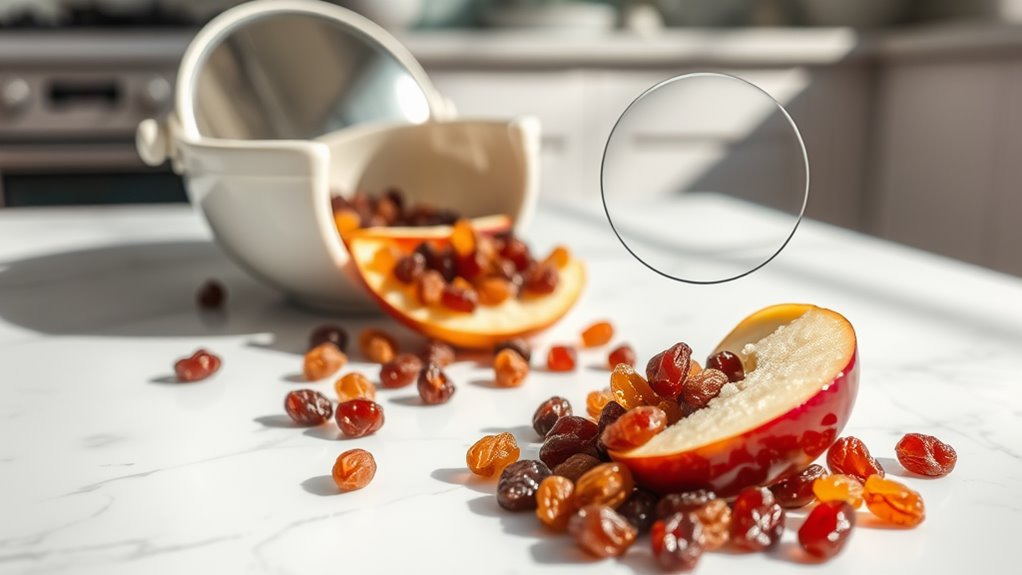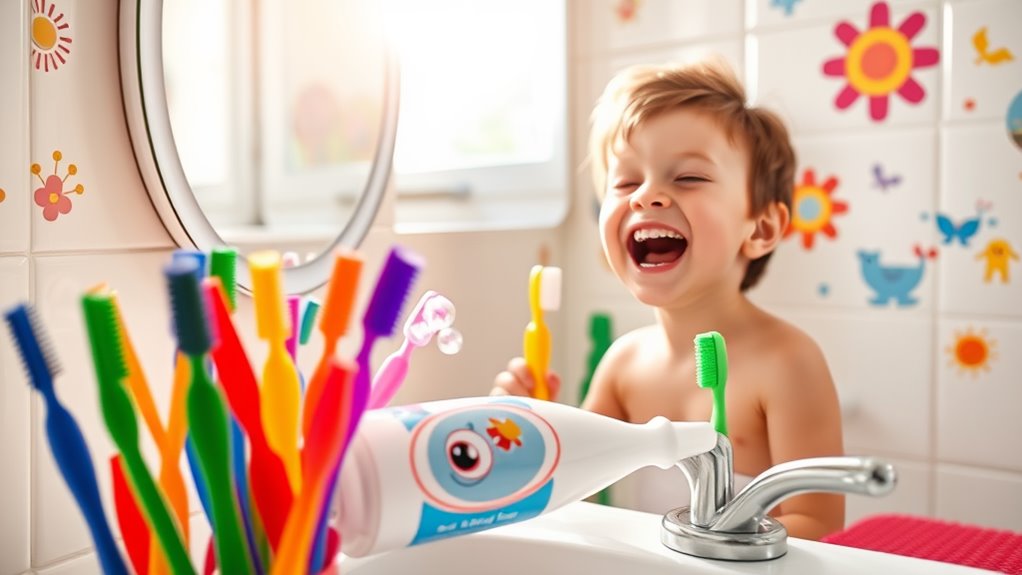The Worst Candy for Your Child’s Teeth (It’s Not What You Think!)
While you might think sugar content is the main concern with candy, the texture matters more for your child’s dental health. Sticky candies like caramels and gummies cling to teeth for hours, while hard candies create prolonged acid exposure as they slowly dissolve. Even sugar-free sour candies can erode tooth enamel with their acidic ingredients. You’ll be surprised to discover which common treats pose the biggest risks to your child’s smile.
Why Sugar Isn’t Always the Biggest Culprit
While most parents focus solely on sugar content when choosing candy, the real dental damage often comes from how long the sweet stays in contact with teeth.
Sticky candies like caramel, taffy, and gummy bears cling to tooth surfaces and get trapped between teeth, creating prolonged acid exposure that erodes enamel.
You’ll find that hard candies can be equally problematic, as they dissolve slowly in your child’s mouth.
Even sugar-free varieties contain acids that can wear down teeth when consumed over extended periods.
What’s more, crunching on hard candy risks causing chips or cracks in teeth.
Instead of fixating on sugar content alone, you should consider a candy’s texture and how quickly it clears from your child’s mouth.
The Science Behind Tooth Decay and Candy
To fully understand why certain candies pose greater risks than others, let’s examine what actually happens in your child’s mouth when they eat sweets.
When bacteria encounter sugar, they produce acid that attacks tooth enamel for up to 20 minutes after each bite. This acid gradually dissolves the protective enamel layer, creating tiny holes that eventually become cavities.
The real danger isn’t just the sugar content – it’s how long the candy stays in contact with teeth. Your child’s saliva naturally helps neutralize acid and wash away food particles, but sticky or slow-dissolving candies prevent this protective process.
Additionally, hard candies that your child sucks on extend acid production time, while chewy treats can lodge between teeth, creating prolonged acid exposure.
Unexpected Candy Dangers to Watch Out For
Although many parents focus on obvious sugary treats, several seemingly innocent candies can pose hidden risks to children’s dental health.
You’ll want to watch out for dried fruit candies that stick to teeth, sugar-free sour candies that contain tooth-eroding acids, and hard candies marketed as “natural” that still promote decay.
Be especially careful with candies that combine multiple hazards. Gummy vitamins, while nutritious, can cling to teeth just like regular gummies.
Breath mints might seem harmless, but sucking on them creates a constant sugar bath for bacteria. Even sugar-free lollipops can be problematic – they encourage extended snacking periods that prevent saliva from neutralizing acids.
If your child does enjoy these treats, encourage immediate brushing or at least rinsing with water afterward.
Best Practices for Post-Candy Dental Care
After enjoying candy, proper dental care becomes your child’s best defense against cavities and tooth decay. Have your child rinse their mouth with water immediately after eating sweets to help wash away sugar and acid.
Wait 30 minutes before brushing teeth, as the enamel is temporarily softened by sugar exposure.
Make sure your child brushes thoroughly for two minutes, paying special attention to the gum line and hard-to-reach back teeth. Use fluoride toothpaste and a soft-bristled brush.
Don’t skip flossing, as sticky candy particles often get trapped between teeth.
Consider keeping sugar-free gum handy – chewing it stimulates saliva production, which naturally cleanses the mouth.
If brushing isn’t possible right away, drinking water and swishing it around the mouth can help minimize damage until proper cleaning is possible.
Smart Alternatives to Traditional Candy
When your child craves something sweet, you don’t have to rely on traditional candy. Consider offering fresh fruit, which contains natural sugars and beneficial nutrients. Frozen grapes, apple slices with peanut butter, or strawberries dipped in dark chocolate can satisfy sweet cravings while promoting dental health.
Sugar-free gum containing xylitol actively helps prevent cavities and freshens breath.
You’ll also find tooth-friendly alternatives like yogurt-covered raisins, dried fruit leather without added sugars, and homemade smoothie popsicles. Smart options include sugar-free gelatin treats, frozen banana “ice cream,” and chia seed pudding sweetened with stevia.
Remember to check labels carefully, as some supposedly healthy alternatives still contain hidden sugars or acidic ingredients that can damage teeth.
Creating a Balanced Approach to Sweet Treats
Since complete restriction of sweets isn’t realistic or healthy, it’s better to teach your child balanced eating habits from an early age. Set clear guidelines about when treats are appropriate and demonstrate moderation through your own behavior.
| Time to Enjoy Sweets | Time to Skip Sweets |
|---|---|
| After meals | Before bedtime |
| Special occasions | During illness |
| Weekend treats | Instead of meals |
| Social gatherings | As bribes/rewards |
You’ll find more success by creating positive associations with healthy foods while allowing controlled indulgences. Teach your kids to enjoy treats mindfully by sitting down, savoring each bite, and stopping when they’re satisfied. This approach helps develop a healthier relationship with sweets and reduces the risk of dental problems caused by frequent sugar exposure.




